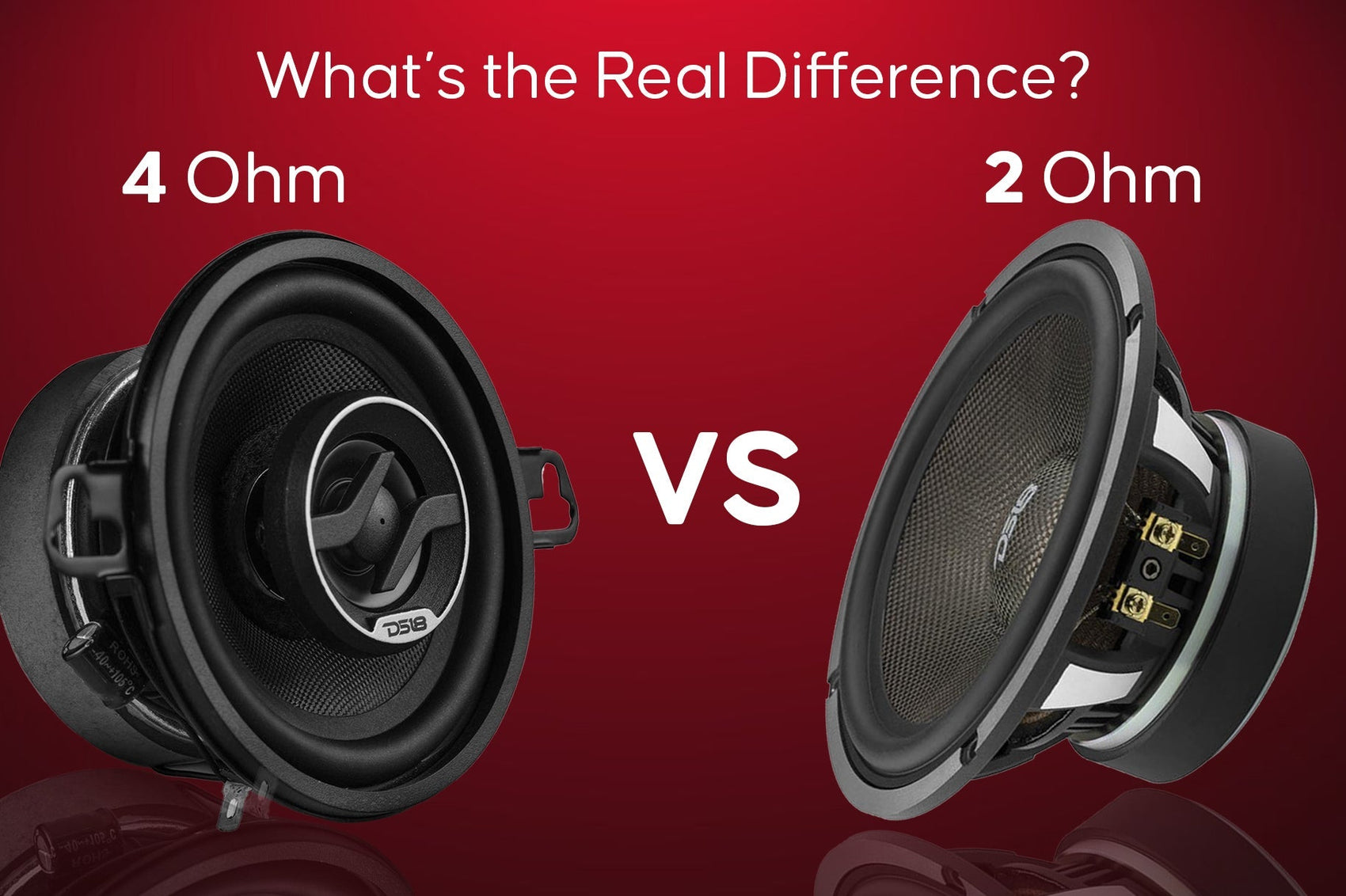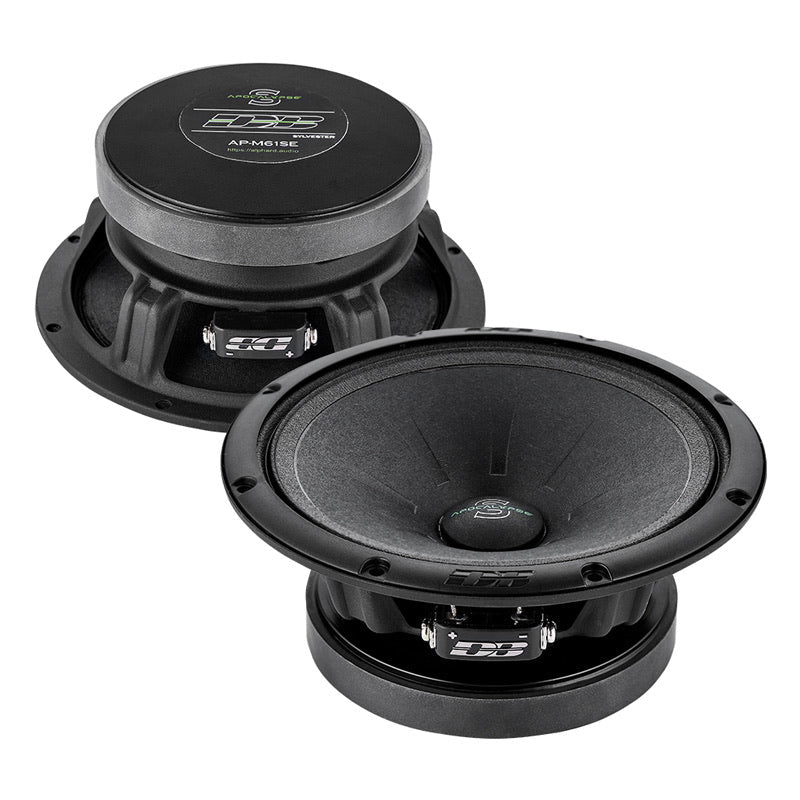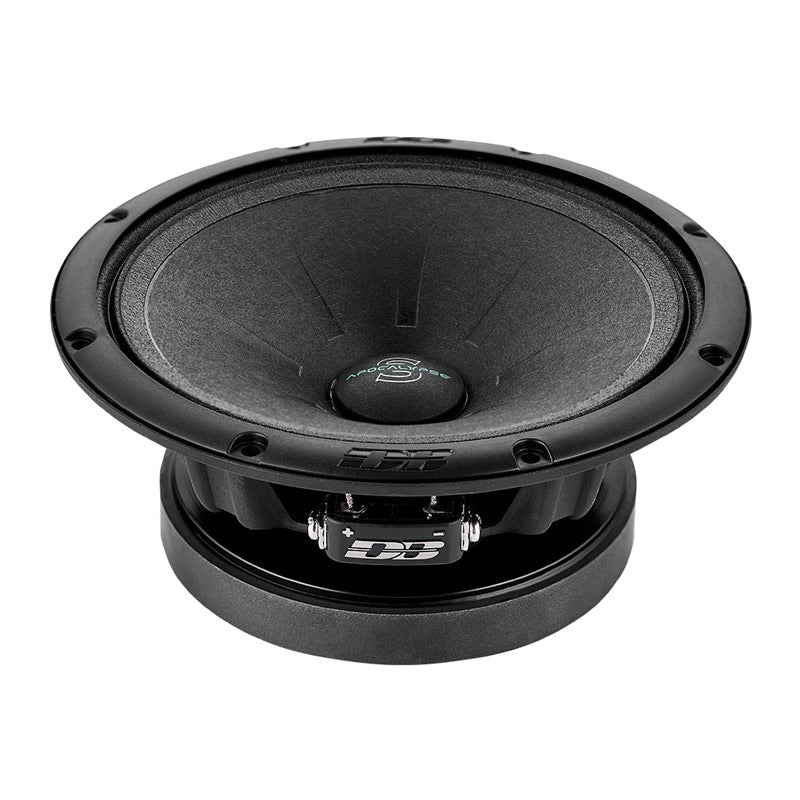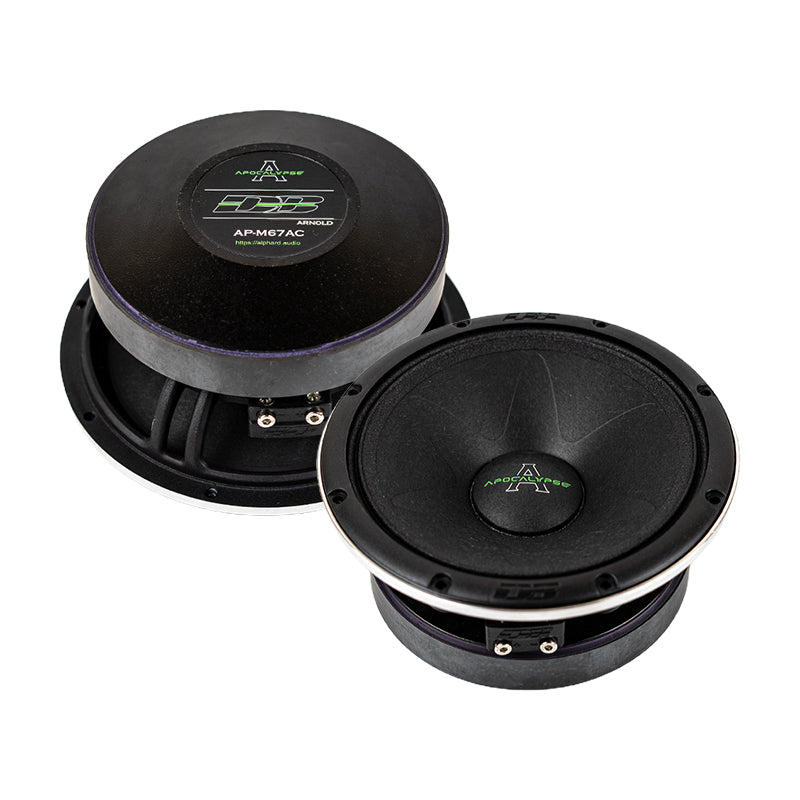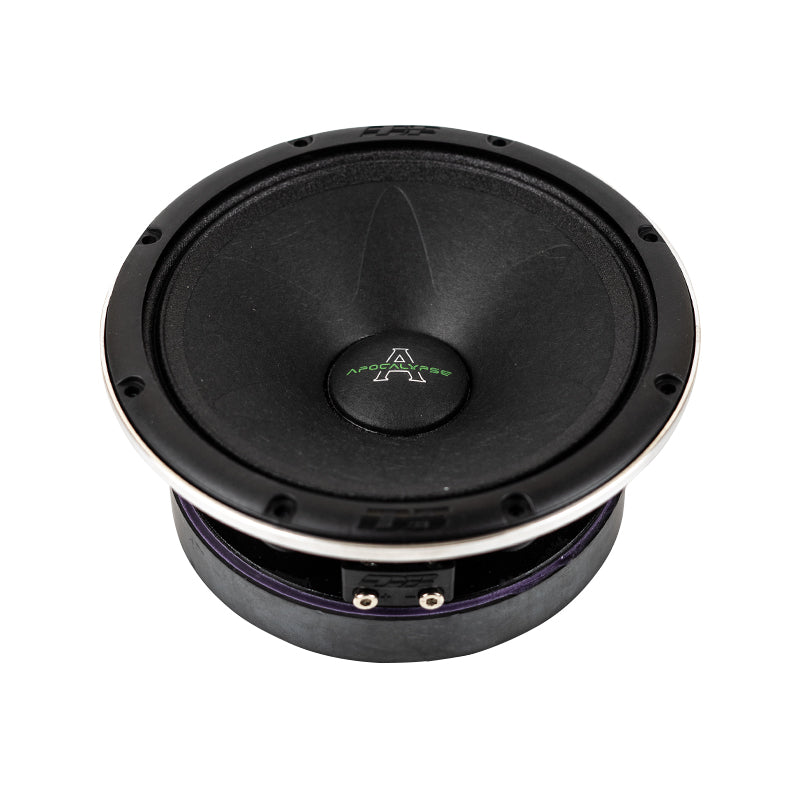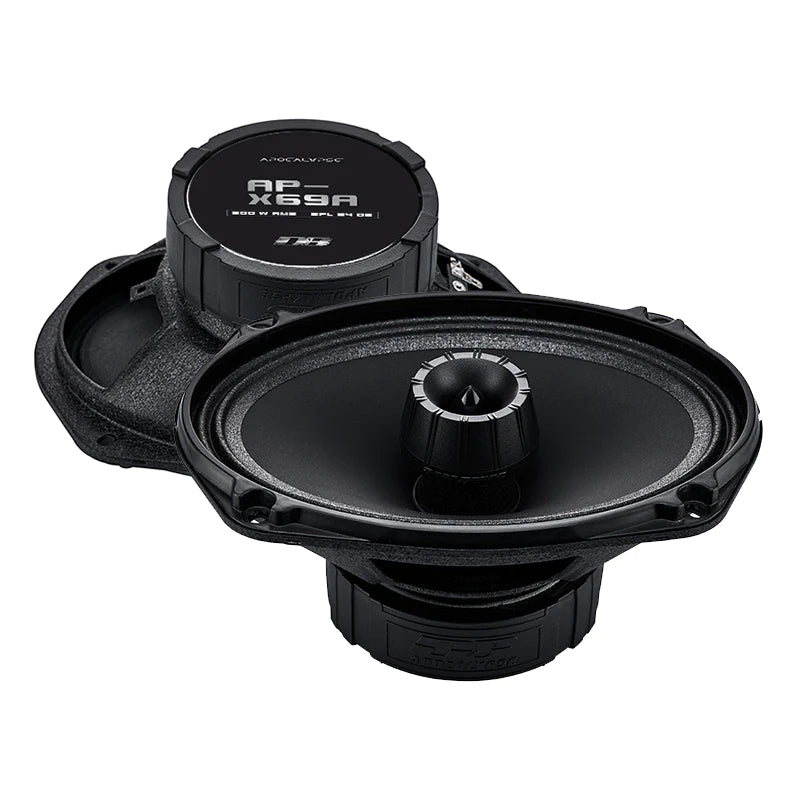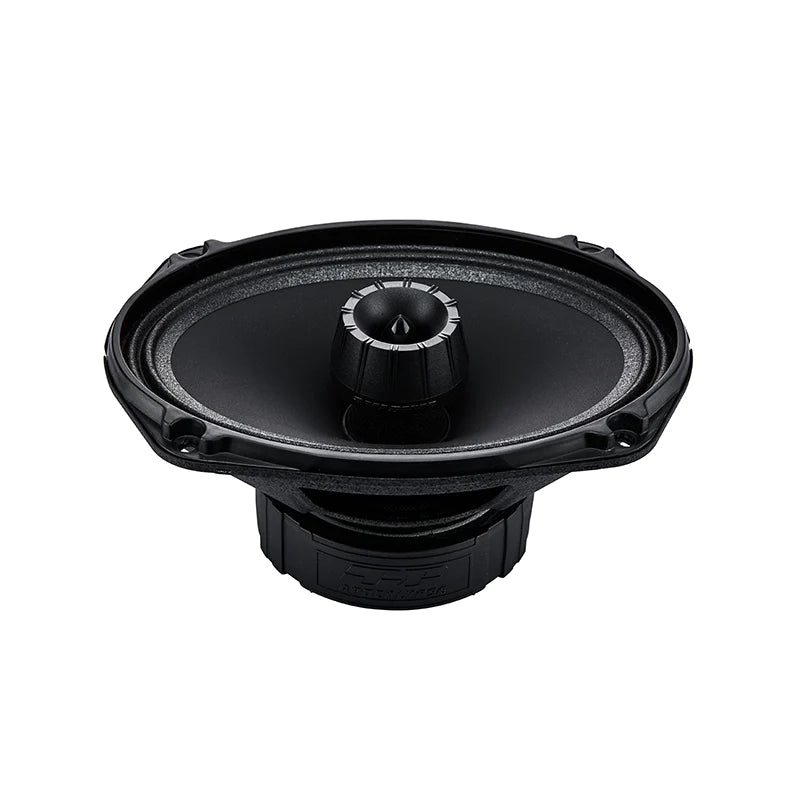2 ohm vs 4 ohm speakers could be a confusion when trying to select a new stereo to upgrade your car audio system. While most of these numbers may seem technical, they matter directly in your system sound, power draw and how long gear lasts. To avoid mistakenly choosing an amp which does not match a speaker and wasting your hard earned cash, knowing about impedance is key, no matter if you want loud bass or clean clarity.
Let’s break down what really separates 2 ohm and 4 ohm speakers, how it impacts on sound, and what works best for different setups.
What Is Speaker Impedance?
The electrical resistance the speaker presents to the amplifier measured in ohms (Ω), is called speaker impedance. The more electrical current the lower resistance lets through, so the amp draws more power.
A 2 ohm speaker is a lower impedance than a 4 ohm speaker which means it pulls more from your amplifier and produces more output. It doesn’t automatically make it sound better — but it does affect the behaviour of the system.
Comparing 2 Ohm and 4 Ohm Speakers
Here’s a side-by-side look at key differences:
|
Feature |
2 Ohm Speaker |
4 Ohm Speaker |
|---|---|---|
|
Resistance |
Lower (2Ω) |
Higher (4Ω) |
|
Volume Output |
Higher |
Slightly lower |
|
Power Draw |
Greater |
Less |
|
Sound Clarity |
Can be less clean |
Typically clearer |
|
Amp Load |
Heavier |
Lighter |
|
Heat and Strain |
More |
Less |
|
Long-Term Reliability |
May run hotter |
More stable |
2 Ohm Speakers: Louder, But Demanding
Many people who like car audio go for 2 ohm speakers since they can deliver more powerful sound. Because there is less resistance, your amp releases more wattage to the speaker and the result is a stronger and deeper bass in your sound.
For example, if your amplifier delivers 200 watts at 4 ohms, it may push 300–400 watts at 2 ohms. That can be a game-changer if you want your subwoofer to rattle the trunk.
However, this extra power draw isn’t free. It stresses your amplifier, generates more heat, and can lead to faster wear on your components if not managed correctly.
4 Ohm Speakers: Balanced and Reliable
4 ohm speakers are the standard in most audio systems, including OEM and aftermarket setups. They’re known for producing cleaner, more balanced sound, and they place less strain on amplifiers.
With a higher resistance 4 ohm speakers don't draw as much current, so your amp is cooler and more efficient. Consequently, sound fidelity is often better, especially at moderate volume listening levels.
If smooth highs, vivid mids and clarity are important, especially in full-range speaker systems, 4 ohm speakers are generally the speaker of choice.
Amplifier Compatibility Matters
Your amplifier’s rating is one of the most important things to check before deciding on 2 ohm or 4 ohm speakers. Some amps have problems with accepting 2 ohm loads. Force-feeding the amp 2 ohm speakers when it isn’t able to handle the load might cause it to get hot, lose detail or be damaged permanently.
Most amplifiers are safely compatible with 4 ohm loads, making 4 ohm speakers a more “plug and play” solution for typical systems. If you’re going with 2 ohm, always double-check that your amp can handle it.
Because most amplifiers are made for 4 ohm loads, 4 ohm speakers tend to be the easiest to use in standard systems. If you’re going with 2 ohm, always double-check that your amp can handle it.
How Does Sound Quality Differ?
Volume isn’t everything. While 2 ohm speakers deliver more output, that power often comes at the cost of sound accuracy. With more current flowing through, there’s a higher chance of signal distortion or background noise—especially if your system isn’t finely tuned.
Being harder to power, 4 ohm speakers allow amplifiers to keep a tighter grip on how the speaker moves. So, when you use passive filters, your sound usually gets clearer, the attack is more responsive and you have less distortion—mostly at high volumes.
Building a good quality-focused sound system, especially for vocals and well-balanced genres of music, 4 ohm speakers typically perform better than low-resistance speakers.
Thermal Load and Efficiency
Running speakers at 2 ohms puts your amplifier under more stress. It uses up more energy, heats up to a higher temperature and becomes less efficient. It can cause the amp or speakers to work less well and might result in quicker deterioration if there isn’t enough venting.
Audiophiles often choose 4 ohm speakers because they stay cooler and work more efficiently with extended listening. This trait is especially important in daily or warm temperature driving conditions so your system lasts longer.
Real-Life Use Case Examples
Imagine adding a dedicated subwoofer and using a 2 ohm monoblock amplifier made for supporting such a system. Here, the 2 ohm subwoofer is the perfect solution because it uses all the power from the amp to produce strong bass sounds.
Now picture a four-speaker door setup powered by a 4-channel amp. You want a smooth, well-rounded soundstage for daily use. 4 ohm component speakers will likely give you better clarity, easier installation, and longer-lasting performance.
Can You Mix 2 Ohm and 4 Ohm Speakers?
Technically, yes—but it’s complicated.
Mixing impedances can cause uneven power distribution. Your amplifier might end up favoring the lower resistance speaker, sending it more power and causing imbalance in sound output. Worse, if the total impedance falls below what the amp can safely handle, you risk overheating or damaging it.
If you're mixing speaker types:
-
Make sure total system impedance stays within amp limits
-
Use separate channels or amps if needed
-
Consult impedance calculators or professional installers
In general, it's best to stick with matching impedance speakers for the cleanest and safest setup.
What About Dual Voice Coil Subwoofers?
Dual Voice Coil (DVC) subs offer even more wiring flexibility. A DVC sub might have two 4 ohm coils, giving you the option to wire them in parallel (2 ohms) or series (8 ohms).
With this, you can correct your subwoofer’s impedance with the capabilities you have with your amplifier. Really a smart way to get the most out of your amp and when using a complex multi sub setup or using only limited power channels.
Understanding how to wire DVC speakers correctly gives you control over both power and performance.
Choosing the Right Speaker for Your Build
For bigger and more powerful sounds, especially in a powerful bass-heavy setup, going with 2 ohm speakers could be useful, depending on your amplifier. It’s perfect for big subwoofer systems and can make SPL (sound pressure level) much higher.
But if you're aiming for clarity, long-term reliability, and amplifier efficiency, 4 ohm speakers are usually the safer, more consistent choice. They’re easier to integrate into stock and aftermarket systems and often provide cleaner output at everyday listening levels.
It is very important to ensure that the speaker impedance matches the specs of your amplifier, no matter what you choose. There are other concerns than just sound quality such as driving smoothness, safety and the durability of your purchase.
Having the knowledge of 2 ohm versus 4 ohm speakers allows you to create a sound system that meets your audio needs and works how you want it to.

